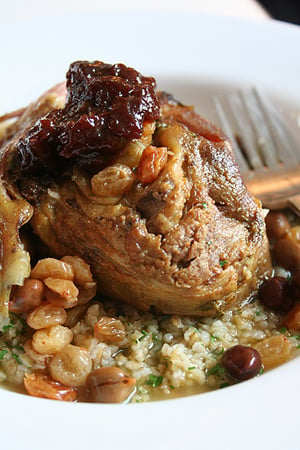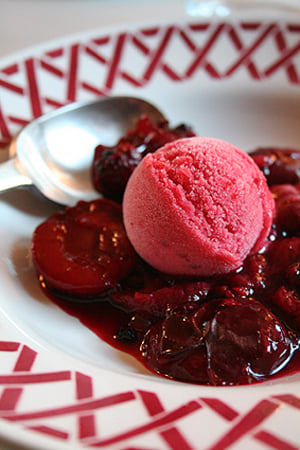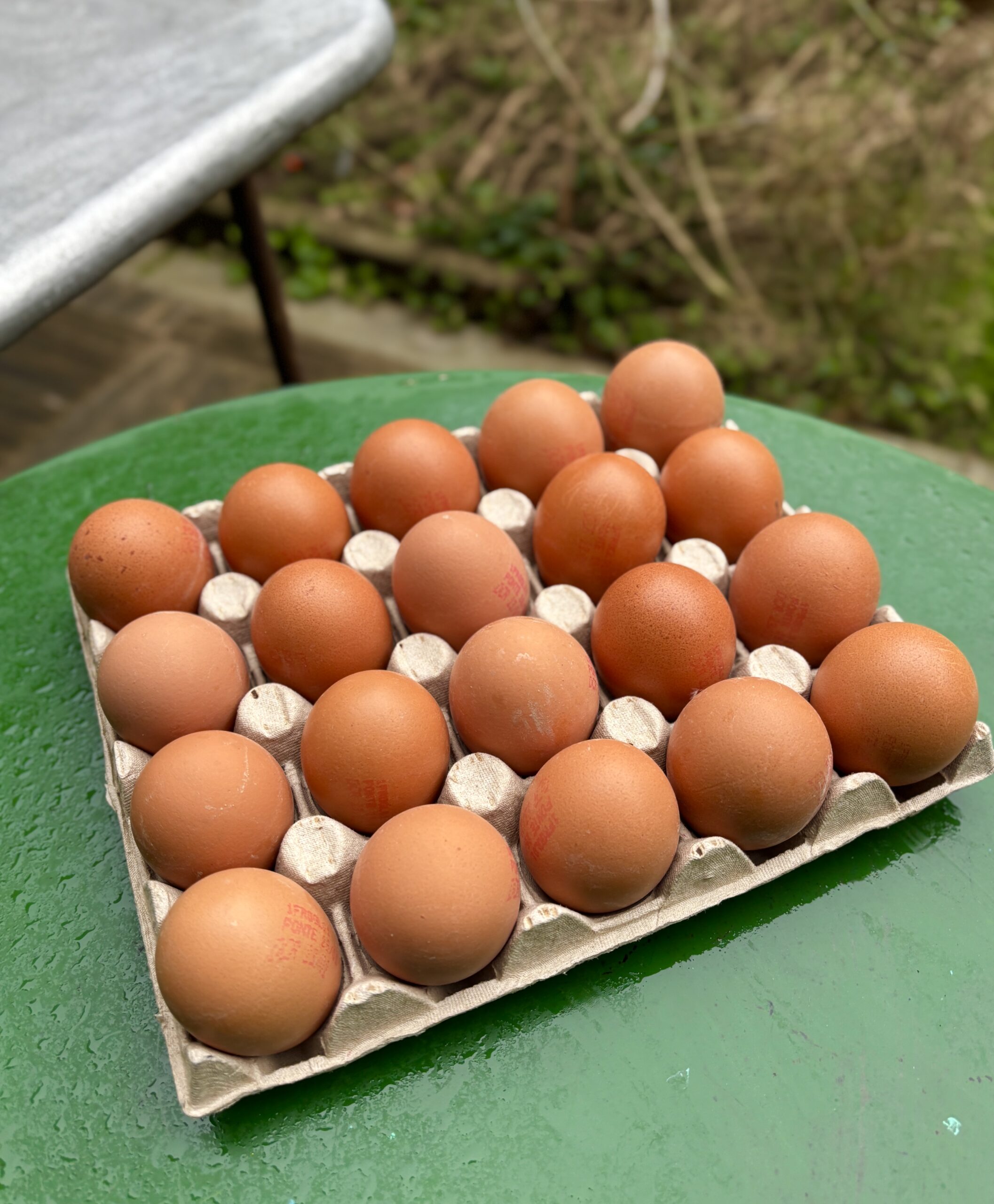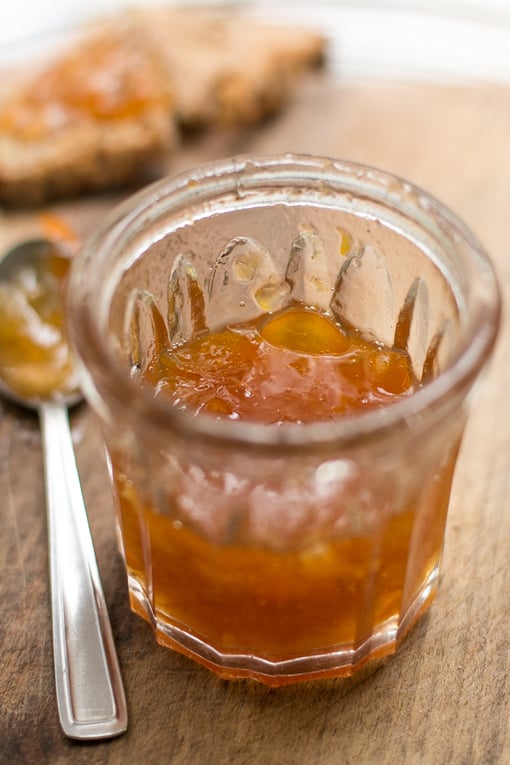Lamb Tagine recipe

One of the first lessons I learned on my way to becoming a true Parisian was to never be on time for a dinner party. The hosts, who called with my first invitation to a dinner party shortly after I arrived in Paris, said “Come at 8pm…But you know, in Paris, that means to come at 8:30pm.”
Subsequently, when I have guests for dinner, I expect them to be at least 20 minutes late, although there’s much debate on how late you’re actually supposed to be. But if you’re on time, or early, your host might not be ready.
It’s a tricky balance when you inviting folks for dinner, trying to make sure when dinner is going to be perfectly cooked. And if your friends show up very late, and you’ve made something like pork roast, which can dry out in a minute, you’re screwed.
In Paris, with so many Arabic and North African butchers around, it’s easy to find cuts of meat that lend themselves to slow-braising and making North African stews like tagines, which leisurely bake in the oven, can pretty much be ignored, leaving you free to do other things before your guests arrive. Being a pastry chef, I used to be wary of cooking meat, never quite knowing how to handle it. But I bravely started going into the butcher shops and bringing home a lamb shoulder, since it’s inexpensive, and most importantly…easy to cook.
Now that I’ve been in France for a while, I regularly make tagines with great success and once you start with a solid master recipe, like the one below, you can vary it for different kinds of meat or poultry, and you can make them as spicy or aromatic as you want by adjusting the spices. And since most benefit from long, leisurely braise in the oven, they’re perfect when you’re entertaining guests who arrive at various times, leaving you free to assist in the all-important task of making sure you guests have plenty of wine in their glasses. And don’t neglect yours either.
Lamb Tagine
- 1 lamb shoulder, cut into 6 pieces (have the butcher do it)
- Vegetable oil
- 1 medium onion, minced
- 1 1/2 cups (375ml) chicken stock, or water
- 1 teaspoon dried ground ginger
- 1 1/2 teaspoons coarse salt, plus more if necessary
- 1 teaspoon turmeric
- 2 teaspoons sweet paprika
- 2 cinnamon sticks
- freshly-ground black pepper
- 1 bunch cilantro, rinsed and tied with a string, coriandre
- 20 threads of saffron
- juice of 1/2 lemon
- Up to three days before you make the tagine, massage the lamb shoulder with the salt and refrigerate it before you cook it.
- To make the tagine, remove the lamb from the refrigerator about thirty minutes before you cook it. Heat a few tablespoons of oil in a Dutch oven over medium-high heat, and sear the lamb pieces very well, turning them only after they’re nicely browned (this step adds flavor to the tagine.) As you cook the lamb pieces, don’t crowd them in. If your Dutch oven isn’t big enough to cook them all in a single layer at once, brown the lamb pieces in batches.
- Preheat the oven to 350ºF (175ºC). Once the lamb is browned, add the onions and some of the stock, then scrape the bottom of the pan with a flat wooden spatula to release the flavorful browned bits. Add the remaining stock, then the spices, the bunch of cilantro, and the saffron.
- Cover the pot and bake in the oven for 2 1/2 to 3 hours, turning the lamb over in the liquid a few times during baking. The liquid should just be simmering gently. If it’s boiling, turn down the heat. When the meat starts to fall off the bone, that’s when it’s ready.
- Remove the lid and leave the tagine in the oven for another 30 minutes so the juices reduce, becoming rich and savory.
Notes

I like it served with a fruity coulis made from red raspberries and cassis (black currants), mixed with sautéed cherries, made from the last cherries of the season, which I’m going to miss terribly.
















